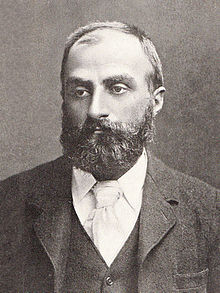William Spiers Bruce
| William Speirs Bruce | |
|---|---|
 |
|
| Born |
1 August 1867 London, England |
| Died | 28 October 1921 (aged 54) Edinburgh, Scotland |
| Resting place | Ashes scattered in the South Atlantic Ocean off the southern shores of South Georgia |
| Nationality | Scottish |
| Citizenship | United Kingdom |
| Education | Norfolk County School, University of Edinburgh |
| Occupation | Naturalist, polar scientist and explorer |
| Spouse(s) | Jessie Bruce, née Mackenzie |
| Children | Eillium Alastair Bruce and Sheila Mackenzie Bruce |
| Parent(s) | Samuel Noble Bruce and Mary Bruce, née Lloyd |
William Speirs Bruce FRSE (1 August 1867 – 28 October 1921) was a Scottish naturalist, polar scientist and oceanographer who organized and led the Scottish National Antarctic Expedition (SNAE, 1902–04) to the South Orkney Islands and the Weddell Sea. Among other achievements, the expedition established the first permanent weather station in Antarctica. Bruce later founded the Scottish Oceanographical Laboratory in Edinburgh, but his plans for a transcontinental Antarctic march via the South Pole were abandoned because of lack of public and financial support.
In 1892 Bruce gave up his medical studies at the University of Edinburgh and joined the Dundee Whaling Expedition to Antarctica as a scientific assistant. This was followed by Arctic voyages to Novaya Zemlya, Spitsbergen and Franz Josef Land. In 1899 Bruce, by then Britain's most experienced polar scientist, applied for a post on Robert Falcon Scott's Discovery Expedition, but delays over this appointment and clashes with Royal Geographical Society (RGS) president Sir Clements Markham led him instead to organise his own expedition, and earned him the permanent enmity of the British geographical establishment. Although Bruce received various awards for his polar work, including an honorary doctorate from the University of Aberdeen, neither he nor any of his SNAE colleagues were recommended by the RGS for the prestigious Polar Medal.
...
Wikipedia
